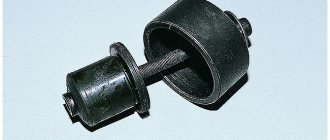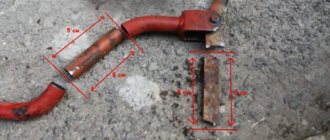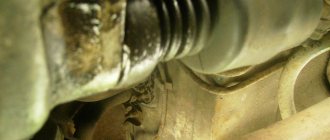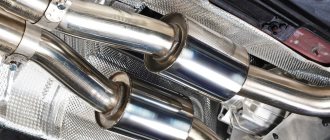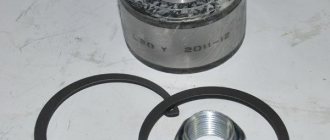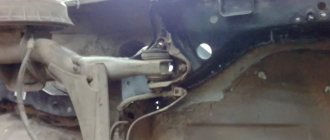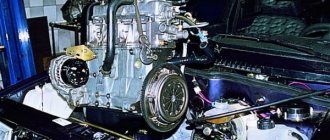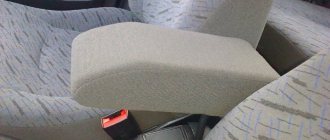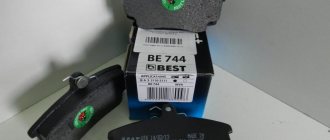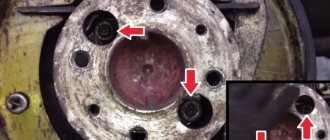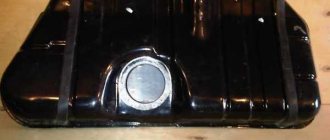Main characteristics
First of all, the book repair and operation of a car tells the main characteristics of the car. The sedan body is made simply, but at the same time elegant. There are no plastic masks on the front fenders, unlike similar models. The 1.5 liter engine shows good technical characteristics. The gearbox is made manually with 5 steps. The injection engine consumes little fuel, about 7-8 liters per 100 kilometers.
For additional driver comfort, there is an on-board system that monitors errors. The windows are electronic and the doors are locked automatically. The seats guarantee comfortable seating for passengers and drivers.
Repair manual for VAZ 21099 Lada Samara
- Repair manuals
- Repair manual for VAZ 21099 (Lada) 1990-2008.
General information about the car.
Front-wheel drive sedan with a 1.5-liter gasoline engine and a 5-speed manual transmission. The stable driving characteristics and reliable handling of front-wheel drive cars of the Samara family are combined in this model with the prestige of a sedan body.
The panel equipment includes an original instrument cluster, backlit switches that provide electric control of windows and door locks. The on-board monitoring system notifies the driver about the performance of individual vehicle components. Included with the new panel is a tilt-adjustable steering column.
A more comfortable seating position for the driver and passengers will be ensured by the use of new seat padding material and height adjustment of the seat belt attachment points.
BA3-21099 completes the lineup of Samara family cars, the repair of which has become an everyday occurrence for lovers of the Russian automotive industry. The stable driving performance of traditional two-volume vehicles of this family is harmoniously complemented by a variation with a three-volume body with an autonomous luggage compartment. Among the prestigious trinity of VAZ front-wheel drive sedans (2115, 2110, 21099), the “ninety-ninth” model is the most affordable.
Responding positively to tightening environmental requirements and striving to increase comfort for its potential owners, the VAZ 21099 purposefully acquires the necessary design improvements. Moreover, the repair of the VAZ 21099 is quite a common occurrence, even despite all the improvements made by auto mechanics. Our website provides a complete repair manual for the VAZ 21099 online with the ability to download.
The car has a more economical engine with distributed fuel injection, an exhaust system with a converter that meets international toxicity standards, and a new instrument panel from Samara-2.
"Samara" - a sedan, which for a long time was considered among the people as the most prestigious model, was and is produced only with a one and a half liter engine (with the exception of export versions). It is noteworthy that this is the first VAZ model (not to be confused with a modification), the index of which consists not of four digits, but of five. This is explained by the fact that during development it bore the index “tens”. During the development work, it was decided to make the VAZ 2110 different, and the resulting sedan from the “nine” was assigned the “number” 21099.
All car owners know that anyone, even the youngest motorist, can repair a VAZ 21099. To make the process easier and faster, we have our website. It contains detailed information divided into sections and subsections.
↓ Comments ↓
1. Description of the car
1.0 Description of the vehicle 1.1 Appearance 1.2 Engine compartment 1.3 General data 1.4 Technical characteristics 1.5 Passport data
2. Vehicle operation
2.0 Vehicle operation 2.1 Safety rules and operating recommendations 2.2 Side doors 2.3 Trunk lid 2.4 Opening and closing the hood 2.5 Luggage compartment 2.6 Adjusting the front seats 2.7 Controls 2.8 Interior ventilation and heating 2.9 Eliminating fogging or frosting of windows
3. Vehicle maintenance
3.0 Vehicle maintenance 3.1 Checking the tightness of the engine and gearbox seals 3.2 Checking the tightness of the cooling system 3.3 Checking the tightness of the fuel system 3.4 Replacing the coolant 3.5 Replacing the oil filter and engine oil 3.6 Replacing the air filter filter element 3.7 Checking and adjusting the generator drive belt 3.8 Replacing the belt generator drive 3.9 Cleaning and flushing parts of the crankcase ventilation system 3.33. Replacing lamps
4. Car care
4.0 Car care 4.1 Car washing 4.2 Caring for and restoring body paint 4.3 Body lubrication 4.4 Cleaning drainage holes 4.5. Car storage 4.6 Preparing for winter use 4.7 Tips for starting the engine in severe frost 4.8 What is useful to buy for winter 4.9 Tips for winter use of the car
5. Problems along the way
5.0 Malfunctions along the way 5.1. Engine 5.2. Checking electrical equipment 5.3 Extraneous knocking noises appeared 5.4 Vibration and shock on the steering wheel 5.5. Brake problems 5.6 Wheel puncture
6. Chassis
6.0 Chassis 6.1. Front suspension 6.2. Rear suspension
7. Steering
7.0 Steering 7.1 Steering wheel 7.2 Steering column 7.3 Steering mechanism 7.4 Replacing steering rods
8. Brake system
8.0 Brake system 8.1 Front wheel brake 8.2 Rear wheel brake 8.3 Wheel cylinder 8.4 Brake drive
9. Electrical equipment
9.0 Electrical equipment 9.1 Relay and fuse box 9.2. Generator 9.3. Starter 9.4. Lighting and light signaling 9.5. Heater 9.6. Windshield wipers 9.7 Sound signal 9.8. Ignition system 9.9 Instrument panel (high)
Body
10.0 Body 10.1 Replacing the front buffer 10.2 Replacing the rear buffer 10.3 Replacing the radiator trim 10.4 Replacing the front fender 10.5 Removing and installing the hood 10.6 Adjusting the hood 10.7 Adjusting the hood lock 10.8 Front door 10.9 Rear door
11. Engine and its systems
11.0 Engine and its systems 11.1 Removing and installing the engine 11.2 Adjusting the clearances in the valve drive 11.3. Power supply system 11.4. Lubrication system 11.5. Cooling system 11.6. Exhaust system 11.7 Complete disassembly of the engine 11.8 Cylinder block. Inspection, troubleshooting and repair 11.9 Piston with connecting rod. Disassembly, troubleshooting and assembly 11.10. Cylinder head 11.15. Carburetor adjustment
12. Transmission
12.0 Transmission 12.1 Gearbox and differential. Main components and parts 12.2 Removing the gearbox 12.3 Installing the gearbox 12.4 Adjusting the clutch drive 12.5 Disassembling the gearbox 12.6 Inspecting and troubleshooting gearbox parts 12.7. Secondary shaft of the gearbox 12.8 Primary shaft of the gearbox 12.9. Differential 12.16. Clutch drive 12.17. Front wheel drive
13. Applications
13.0 Appendices 13.1 Appendix 1. Basic data for adjustments and monitoring 13.2 Appendix 2. Fuels and lubricants and operating fluids 13.3 Appendix 3. Tightening torques for threaded connections 13.4 Appendix 4. Service book 13.5 Appendix 5. Vehicle electrical diagram
Auto highlight
First of all, you need to study the brake system. This includes regular replacement of pads and brake cylinders. The repair and operation manual for a VAZ 21099 carburetor or injector describes in detail how to disconnect the fasteners, dismantle the old part and install a new one.
The literature allows you to competently bleed the brake system. This is a simple action if you follow all the steps step by step:
- It is necessary to open the reservoir on the master cylinder.
- You should find and clean the bleeder fitting. It is located on one of the brakes, specifically for troubleshooting and prevention.
- Brake fluid is poured using a special hose. The cable is immersed in a bottle with it and the brake is pumped.
- The buddy must press the pedal all the way down several times and then hold it down.
- The fitting is unscrewed with a key, the liquid merges with the air.
For a more detailed description of the procedure, download the manual. This process is repeated several times until no more air bubbles come out.
Brief history of VAZ 21099
The first appearance of the car occurred in 1990. It was during this period that mass production of the model began at the AvtoVAZ plant. It lasted until 2004, and then continued with the Ukrainian ZAZ. VAZ 21099 models produced in Ukraine were assembled using Russian vehicle kits and had the interior of a VAZ-2115 .
Export versions of “Ninety-Ninth” were named:
- Lada Forma;
- Lada Sagona;
- Lada Sable;
- Lada Samara Saloon.
As for the configuration, the VAZ 21099 has a full-size sedan-type body, a 5-speed manual transmission, as well as one of three types of gasoline injection engines (1.3 l, 1.5 l or 1.6 l). However, there were also modifications of the car that received carburetor and injection types of engines . In rare cases, models with an 8-valve engine were individually produced.
During the assembly period of the car, an all-wheel drive model (Lada Victory) also appeared briefly. However, its low popularity led to the abandonment of further production.
Heart examination
Any edition of the manual says that the most important part is the engine. The driver knows that each vehicle has its own resource. In this case we are talking about 150 thousand kilometers. In most cases, the machine lasts longer, but proper care is important for this.
First of all, you must follow the maintenance rules. The manual provides detailed advice on when and how to change each part. You can handle almost all consumables with your own hands.
The second point is driving style. The engine is strictly prohibited from operating for a long time at low or high speeds. The driver should change gears in a timely manner.
Recommendations include restrictions on towing, cold starts, and the use of poor fuel.
The main way to extend the life of the machine's heart is to maintain it regularly. It consists of a planned replacement of technical fluids and consumables. Depending on the mileage, but on average approximately once a year, it is necessary to inspect the car and consult the manual for preventative repairs and identification of problems.
Known modernizations of VAZ 21099
In 1997, the model was restyled and received the name VAZ-2115. She became the first representative of the new Samara-2 family . This is what AvtoVAZ continued to produce after it stopped producing the VAZ 21099 in 2004.
As for the aforementioned Lada Victory model, at the time of assembly it had a rear spoiler, 14-inch alloy wheels, and a 1.6-liter engine . Thanks to its excellent characteristics, it was exported to Europe.
Repair features
This model, like all other Ladas, loves repairs. Unlike their foreign counterparts, they break down more often. But the cost of servicing this car is much lower than foreign cars. Replacing the same racks will be several times cheaper.
Experienced car owners improve and tune their cars. Thus, they correct some of the manufacturer's flaws.
Maintenance of this car for a novice driver is divided into 3 types:
- Do-it-yourself problems.
- Malfunctions that can be fixed at home, but with the help of a specialist.
- Repairs carried out only at service stations.
The last type includes:
- camber - toe;
- wheel balancing;
- recovery after a serious accident;
- some types of body repair;
- electrical diagnostics by computer;
- engine boring;
- flashing the on-board computer;
- resetting errors on the computer;
- vulcanization, etc.
The second type includes work that the owner himself can only partially do. If the driver is a beginner, he does not yet know how to weld, repair wiring, carry out work on engines, and does not know the structure of the car well. In such cases, experienced car owners or mechanics are called to help.
